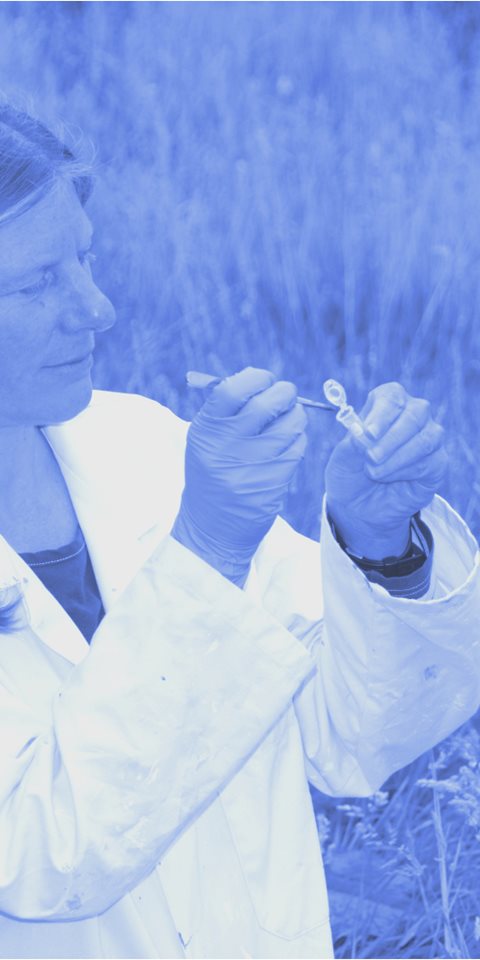RESEARCH BRIEF: Environmental factors and climate change implications of Louping ill virus infection in Scottish sheep farms
1. KEY MESSAGES
Louping ill virus is transmitted by ticks and causes death and illness in a range of livestock, especially sheep, as well as red grouse, an economically important gamebird. Sheep are most at risk of Louping ill virus infection in areas with higher deer densities, upland/moorland habitats and areas of Scotland with a warmer climate. Models predict that the risk of infection will increase with climate change, especially in the north and west coasts and islands, where sheep farming is often already economically marginal.
A survey of 125 sheep farms using blood samples to measure antibodies against Louping ill virus found that sheep were more likely to be exposed to Louping ill virus in areas that had:
Higher deer density (because, although deer do not transmit the virus, they drive populations of ticks);
Upland/moorland habitats rather than lowland/improved pasture (other animals that transmit Louping ill
virus, such as red grouse and mountain hares, frequent upland habitats);
Warmer climates (higher temperatures increase tick activity and development rates).
Mathematical models predict that risk of Louping ill virus infection increases with climate change. Due to
habitat, hosts and climate, the effect of climate change is predicted to be strongest in crofting and upland areas where sheep farming is often marginally profitable and so more economically vulnerable to the additional costs associated with disease. With no vaccine currently available and dipping sheep no longer compulsory, alternative control strategies will need to be implemented by sheep farmers.
This research aimed to: Identify the environmental risk factors for Louping ill virus infection in sheep throughout Scotland, in order to inform policy on mitigation strategies against exposure to infection.
Predict changes in the risk of Louping ill virus infection over Scotland under scenarios of climate change.
Identifying the risk factors for disease is crucial for developing policy and strategies for controlling exposure to pathogens. These results can inform deer management policy, especially where there may be conflict between contrasting upland management objectives, e.g., revenue from deer hunting where high deer densities are preferred versus sheep farmers. With the predicted increase in ticks and Louping ill virus infection risk in economically marginal areas under climate change, and with no vaccine currently available and compulsory dipping of sheep with organophosphate pesticides (that killed ticks on sheep and protected them from further tick bites) long gone, different control strategies will need to be implemented. The blood survey results can also be used for more optimal targeting of tick and disease mitigating strategies for sheep, e.g. increasing the frequency and efficiency of applying acaricide pour-ons to sheep in higher risk areas such as upland/moorland in warmer climates and where there are more deer.
The results were based on blood sample surveys from 26 sheep from each of 125 sheep farms throughout Scotland. Increasing the sampling number of sheep and sheep farms would make the results more robust, especially from the West Highlands where fewer sheep farms were sampled.
It is impossible to test the validity of predictions from the mathematical models that predicted the impact of climate change (until the climate has actually changed). All models must make assumptions; this model assumed certain densities of hosts (e.g. deer, mountain hares and grouse) according to their habitat preferences, which comes with an element of error because host densities will also be shaped by how they are managed by humans.
Gilbert, L., Brülisauer, F., McLeod, J., Gunn, G.J., Willoughby, K., Cousens, C. Environmental risk factors for louping ill virus among Scottish sheep farms Front. Vet. Sci., 2020. https://www.frontiersin.org/articles/10.3389/fvets.2020.00377/full
